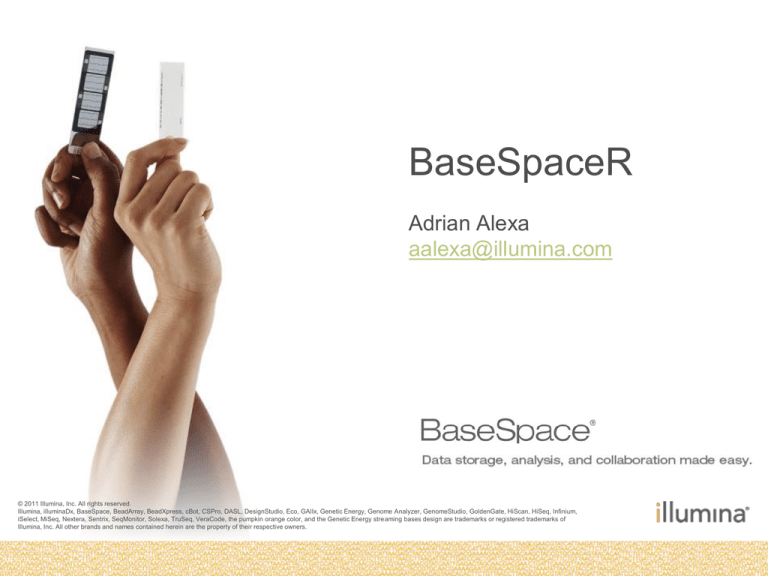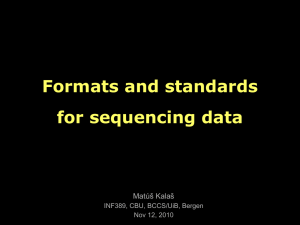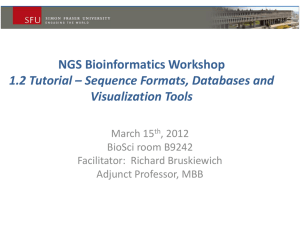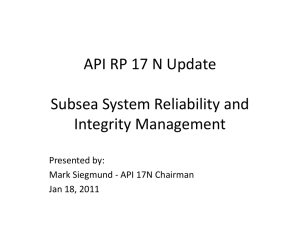
BaseSpaceR
Adrian Alexa
aalexa@illumina.com
© 2011 Illumina, Inc. All rights reserved.
Illumina, illuminaDx, BaseSpace, BeadArray, BeadXpress, cBot, CSPro, DASL, DesignStudio, Eco, GAIIx, Genetic Energy, Genome Analyzer, GenomeStudio, GoldenGate, HiScan, HiSeq, Infinium,
iSelect, MiSeq, Nextera, Sentrix, SeqMonitor, Solexa, TruSeq, VeraCode, the pumpkin orange color, and the Genetic Energy streaming bases design are trademarks or registered trademarks of
Illumina, Inc. All other brands and names contained herein are the property of their respective owners.
BaseSpace - Plug and Play Genomic Cloud Solution
From Sample to Biological Insight
1. Seamless Instrument Integration
2. Harness the Internet
3. Accessible to Everyone
Data transferred as the instrument
runs
Data available in BaseSpace within
minutes of a run finishing
Automatic de-multiplexing and
FASTQ generation
2
BaseSpace
Data storage, analysis and collaboration.
Almost 40,000 Instrument Runs Streamed to BaseSpace by April 2013
3
BaseSpace API
REST API and Native Apps
Users
SaaS
App
App
App
UI
App
Dev
Portal
Developers
PaaS
BaseSpace API
Instruments
OpenStack
IaaS
Visualization
Secondary Analysis
Validation
Methods Development
4
Biological Inference
BaseSpace API
Data Model
5
BaseSpaceR = BaseSpace + R + Bioconductor
A translation layer between BaseSpace’ REST API and R data structures
Cloud based content management system, facilitating the
storage and sharing of genomic data.
Features
Rich environment of statistical and data analysis tools for
high-throughput genomic data.
6
Persistent connection with the REST server and support for the REST API query
parameters.
Vectorized operations in line with the R semantic. Allows for queries across
multiple Projects, Samples, AppResults, Files, etc.
S4 class system used to represent the BaseSpace data model.
Integration with Bioconductor libraries and data containers [working on it…].
Portability on most platforms: Linux, Windows and Mac OS X.
BaseSpaceR
REST API and R data structures
REST API
GET https://api.basespace.illumina.com/v1pre3/samples/16018/files?Extensions=gz&Offset=3&Limit=1
7
R API
Q-score distribution
Access to the FASTQ files
1) Authentication [3 lines of code]
– User needs to interact with the BaseSpace UI (or via a web server).
> aAuth <- AppAuth(client_id = "5b123858536b473ba740e9a9eb0abf64",
+
client_secret = "b3168bf65bf543f3b6e7f087856922df",
+
scope = "CREATE GLOBAL, BROWSE GLOBAL, CREATE PROJECTS")
Launching browser for OAuth authentication...
> requestAccessToken(aAuth)
Access token successfully acquired!
> aAuth
Object of class "AppAuth" with:
8
Q-score distribution
Access to the FASTQ files
1) Authentication [3 lines of code]
– User needs to interact with the BaseSpace UI (or via a web server).
2) Select a sample (collection of FASTQ files) from the Project of your choice [3 lines]
> myProj <- listProjects(aAuth)
> data.frame(Name = Name(myProj), Id = Id(myProj))
Name
Id
1
BaseSpaceDemo
2
2 Cancer Sequencing Demo
4
3
HiSeq 2500
7
...............................
> sampl <- listSamples(aAuth, projectId = 2, Limit = 1)
> inSample <- Samples(sampl, simplify = TRUE)
> inSample
#Samples object:
9
Q-score distribution
Access to the FASTQ files
1) Authentication [3 lines of code]
– User needs to interact with the BaseSpace UI (or via a web server).
2) Select a sample (collection of FASTQ files) from the Project of your choice [3 lines]
3) Download the files (FASTQs in our case) [4 lines]
> f <- listFiles(inSample, Extensions = ".gz")
> idx <- grep("_R(1|2)_", Name(f))
> outDir <- paste("Sample", Id(inSample), sep = "_")
> getFiles(aAuth, id = Id(f)[idx], destDir = outDir, verbose = TRUE)
Downloading 4 files in directory: Sample_16018
Downloading file: data/intensities/basecalls/s_G1_L001_R1_001.fastq.1.gz
........................................................................
> file.exists(file.path(outDir, f$Path[idx]))
[1] TRUE TRUE TRUE TRUE
10
Q-score distribution
Access to the FASTQ files
1) Authentication [3 lines of code]
– User needs to interact with the BaseSpace UI (or via a web server).
2) Select a sample (collection of FASTQ files) from the Project of your choice [3 lines]
3) Download the files (FASTQs in our case) [4 lines]
4) Process the downloaded files and compute the stats […]
> library(ShortRead)
> source("QscoreApp-functions.R")
> qtab <- lapply(floc, getQscoreCounts)
> idxR1 <- grep("_R1_", names(floc), fixed = TRUE)
> idxR2 <- grep("_R2_", names(floc), fixed = TRUE)
> x <- getQscoreStats(cbind(Reduce("+", qtab[idxR1]),
Reduce("+", qtab[idxR2])))
> ylim <- range(x) + c(-2L, 2L)
> plot(x = seq_len(nrow(x)), type = "n", ylim = ylim,
+
xlab = "Cycle", ylab = "Q-score",
+
main = "Q-scores statistics")
> sx <- apply(x[, c("5%", "95%")], 2, function(x)
smooth.spline(x)$y)
> sx[, "95%"] <- pmax(sx[, "95%"], x[, "median"])
> polygon(c(1L:nrow(x), nrow(x):1L), c(sx[, "95%"],
rev(sx[, "5%"])), col = "#CCEBC580", border = NA)
> matpoints(sx, type = "l", lwd = .5, lty = 2, col =
"black")
> lines(x[, "mean"], lwd = 2, col = "red")
> lines(x[, "median"], lwd = 2, col = "black")
11
Q-score distribution
Access to the FASTQ files
1) Authentication [3 lines of code]
– User needs to interact with the BaseSpace UI (or via a web server).
2) Select a sample (collection of FASTQ files) from the Project of your choice [3 lines]
3) Download the files (FASTQs in our case) [4 lines]
4) Process the downloaded files and compute the stats […]
5) Upload results back to BaseSpace [~10 lines]
– Results are collection of files for now, minimal visualisation.
12
Copy Number Abnormalities
Accessing the coverage via a high-level REST method
Detect amplifications and deletions in
cancer samples
Data can be obtained from a single
MiSeq runs (one for tumor and one for
normal or even both on a flowcel).
Location of
centromeres indicated
by vertical dotted lines
Homozygous deletion of part of chr8p.
13
Typical analysis requires only the
coverage data and this can be directly
obtained using a REST method.
Corrects for tumor ploidy and purity.
Amplification of distal chr8q.
RConsole
Exploring BaseSpace data using RStudio
14
What’s next
Facilitate the use of Bioconductor packages – there is much to gain if
as many Bioconductor packages as possible can consume data
(directly) from BaseSpace.
Introduce high-level methods (REST or R API) for random access to
BAMs, VCFs, metric data, etc. One can already use Rsamtools for
indexed BAMs.
R level methods to facilitate RNAseq, ChipSeq, etc. analyses.
BaseSpace Data Central – publicly available data – most of it will be
data coming from our latest instruments, chemistry, workflows.
15
Resources
Tutorials, videos, whitepapers and other educational material:
http://www.illumina.com/software/basespace/basespace-education.ilmn
BaseSpace homepage:
https://basespace.illumina.com
BaseSpace developer portal:
https://developer.basespace.illumina.com
Bio-IT World Asia presentation:
https://dl.dropboxusercontent.com/u/14162259/BioITAsia_MJJ.pptx
More documentation on BaseSpace:
http://support.illumina.com/sequencing/sequencing_software/basespace/doc
umentation.ilmn
BaseSpaceR homepage on Bioconductor:
http://bioconductor.org/packages/release/bioc/html/BaseSpaceR.html
16








